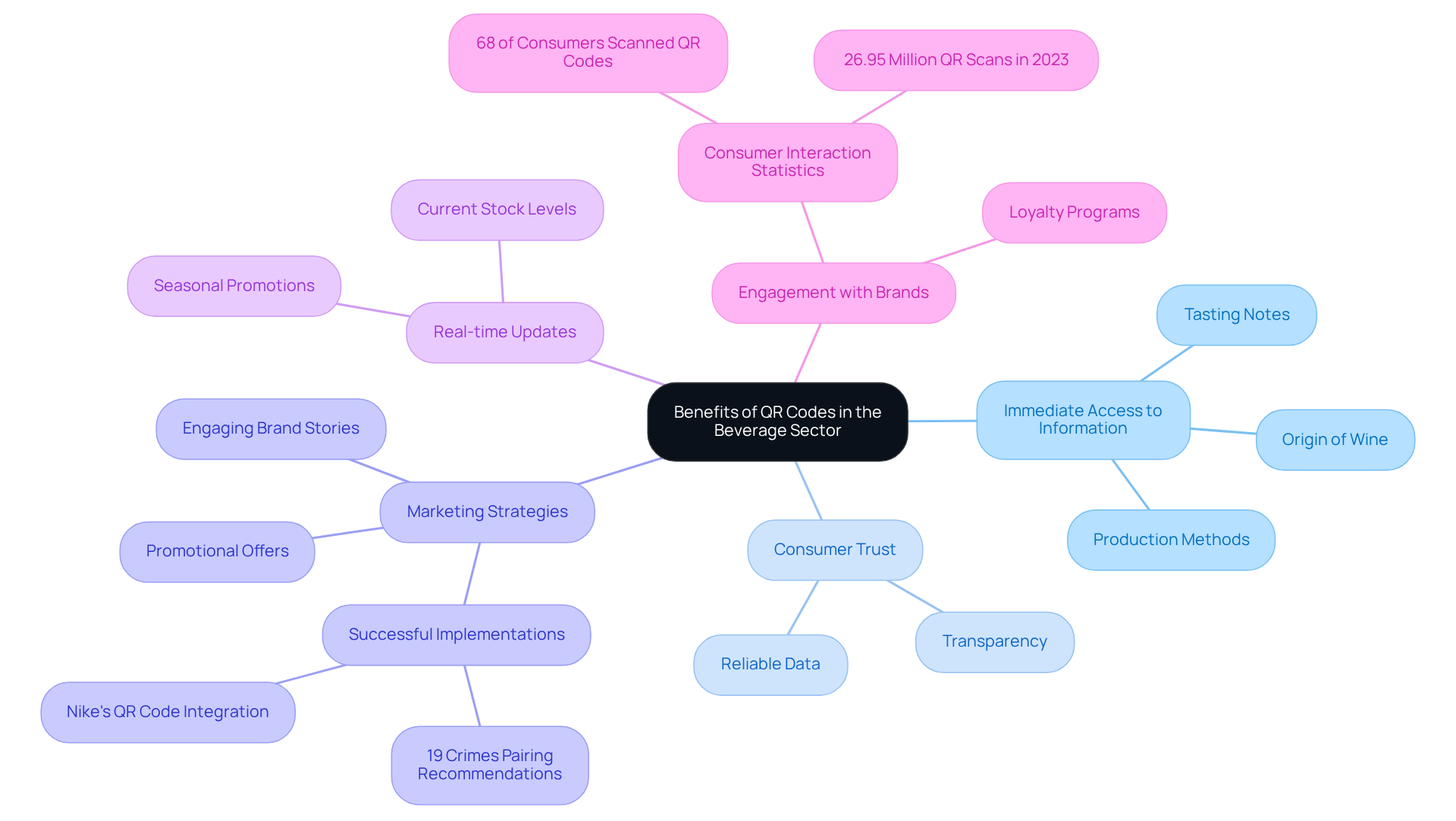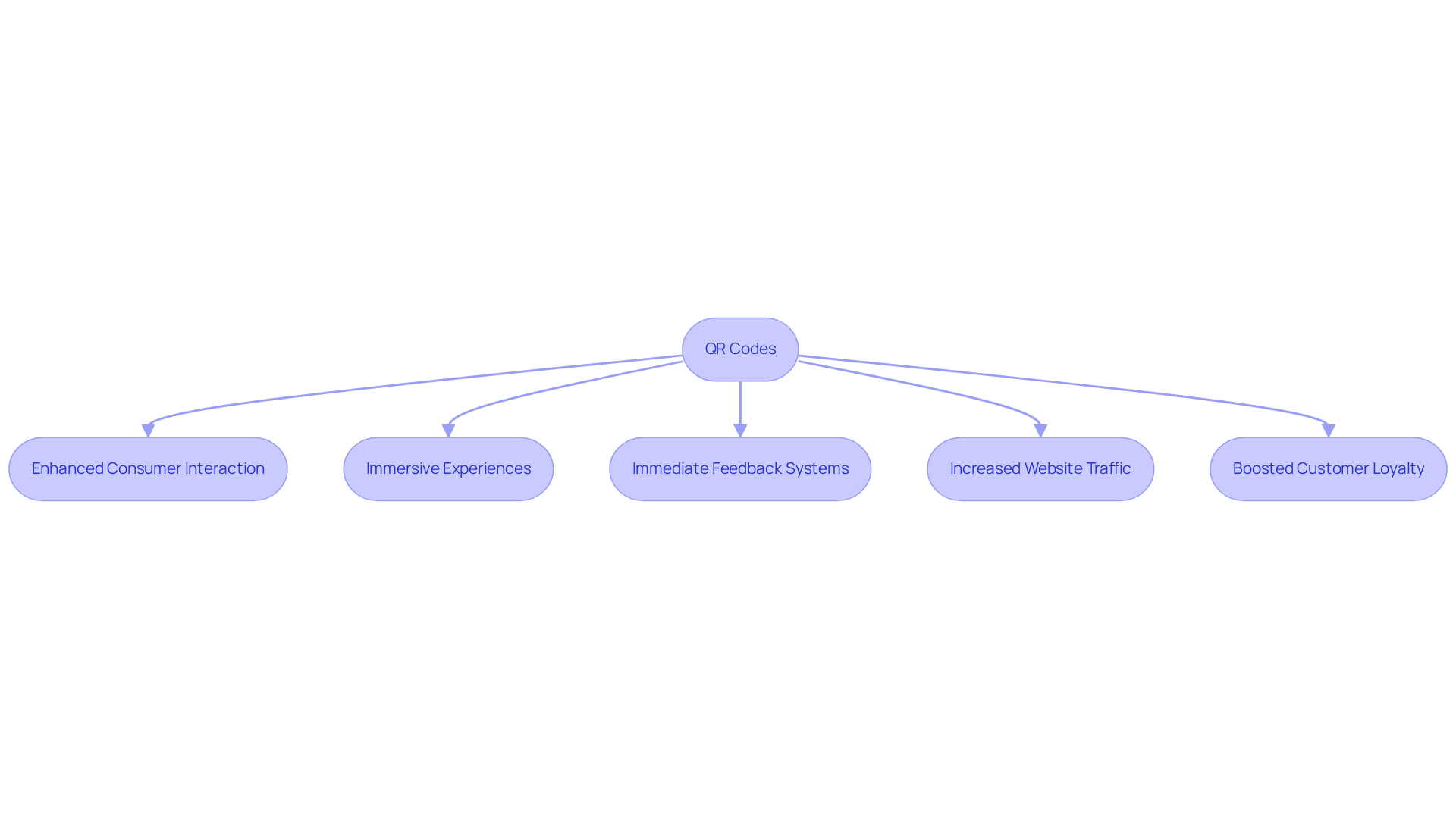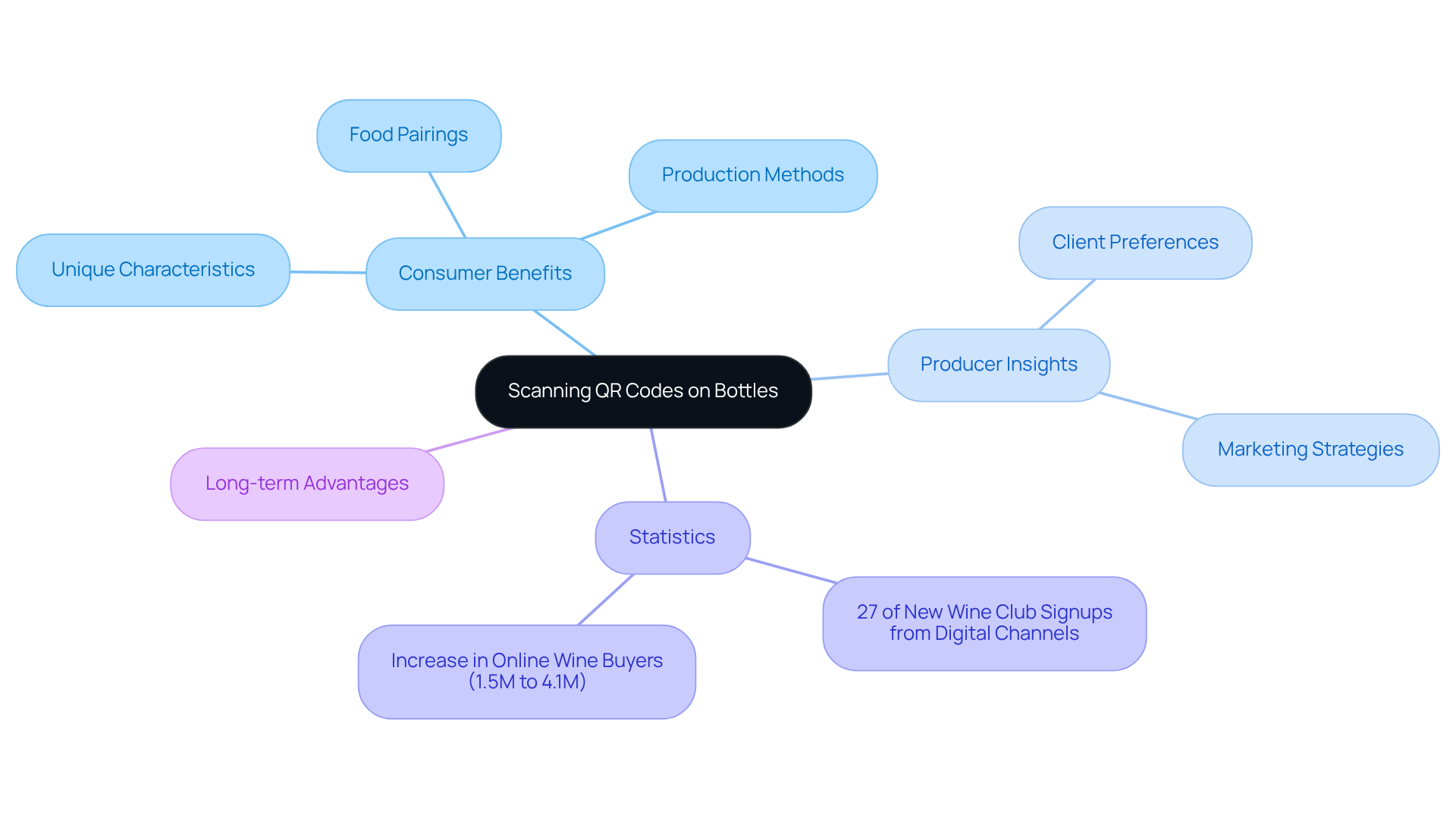Overview
Scanning the QR code on a bottle is essential. It provides immediate access to detailed product information, including the beverage's origin, tasting notes, and production methods. This transparency empowers consumers to make informed purchasing decisions. By enhancing the consumer experience, wineries can foster brand loyalty. Engaging customers with interactive content and real-time updates transforms casual buyers into dedicated patrons. This strategic approach not only enriches the consumer's journey but also solidifies the winery's position in a competitive market.
Introduction
Scanning QR codes on product bottles has become an essential practice for consumers seeking deeper insights into their purchases. These digital gateways unlock a wealth of information, ranging from the origins and tasting notes of beverages to real-time updates on stock and promotions. However, the increasing reliance on QR codes prompts a critical inquiry: what might consumers overlook by neglecting to scan? Understanding the implications of this technology not only enhances the purchasing experience but also fosters a crucial connection between producers and consumers in an ever-competitive market.
Understand the Accuracy and Information Benefits of QR Codes
QR symbols have emerged as a crucial asset in the beverage sector, which leads us to ask why you should always scan the QR code on the bottle if available, as they provide consumers immediate access to a wealth of product information. Upon scanning, these barcodes provide into the wine, including its origin, tasting notes, and production methods. This level of precision is essential, which is why you should always scan the QR code on the bottle if available, empowering individuals to make informed decisions based on reliable data rather than assumptions or outdated information. Moreover, QR symbols can deliver real-time updates, such as current stock levels or promotional offers, which is why you should always scan the QR code on the bottle if available to ensure that consumers have the most pertinent information readily available.
This transparency significantly enhances the consumer experience and fosters trust between producers and their clients, which is why you should always scan the QR code on the bottle if available to strengthen the connection with the brand. By leveraging QR symbols, wineries can transform casual visitors into loyal patrons, as these symbols facilitate engaging brand stories that resonate with modern audiences. Research indicates that 68% of consumers globally have interacted with QR symbols, which raises the question of why you should always scan the QR code on the bottle if available, underscoring their growing importance in marketing strategies. Additionally, QR scans surged to 26.95 million in 2023, reflecting a remarkable 433% increase compared to the previous two years, which raises the question of why you should always scan the QR code on the bottle if available.
The integration of QR symbols highlights why you should always scan the QR code on the bottle if available, as it can lead to increased customer engagement, with successful implementations like 19 Crimes providing pairing recommendations and recipes through these symbols, thereby enriching the overall tasting experience. This emphasis on precise information in marketing strategies highlights why you should always scan the QR code on the bottle if available in the wine industry. By adopting transformative direct-to-consumer approaches and engaging in strategic capital planning, vineyards can not only bolster consumer trust but also differentiate themselves in a competitive landscape, ultimately driving sales and enhancing brand loyalty.

Explore How QR Codes Enhance Consumer Engagement and Access to Product Information
QR symbols represent a vital link between vineyards and buyers, significantly enhancing interaction through engaging experiences essential for successful direct-to-consumer strategies. When customers wonder why they should always on the bottle if available, they are directed to a dedicated landing page that features videos, tasting notes, food pairing suggestions, and captivating narratives about the vineyard's heritage. This immersive experience not only informs but also entertains, enriching the wine selection process and aligning with the necessity for compelling brand narratives that drive sales.
Furthermore, QR symbols enable immediate feedback systems, allowing patrons to share their opinions and experiences with the establishment. This feedback loop is crucial for vineyards seeking to refine their offerings and strengthen customer relationships, ultimately boosting customer loyalty. The impact of QR symbols on customer interaction is substantial; wineries that have embraced these symbols report an average increase in engagement, with some experiencing a surge in website traffic from 100 to 5,000 visitors each month. Experts underscore that QR symbols can transform passive customers into active participants in the brand story, which raises the important question of why should you always scan the QR code on the bottle if available, fostering loyalty and encouraging repeat purchases.
For instance, Siduri Wines' QR initiative resulted in an increase in the average time spent on their website from one minute to between three and five minutes, illustrating how these elements can captivate and sustain customer interest. Additionally, with 27% of new membership registrations originating from online platforms, the importance of QR technology in enhancing customer interaction and sales is further highlighted. As the wine sector continues to evolve, leveraging QR technology for interactive experiences will be crucial for producers aiming to enhance customer engagement and promote sustainable growth. The flexyQR service from OENsights offers vineyards a practical tool to manage their QR symbols effectively, ensuring they can adapt to the growing trend of QR symbol usage, projected to increase by 22% by 2025. As Dennis Kreps, co-owner of Quintessential, states, "QR symbols are a straightforward, economical, and eco-friendly method to deliver tasting notes and brand information directly to our clients.

Recognize the Risks of Not Scanning QR Codes on Bottles
There are many reasons why you should always scan the QR code on the bottle if available, as failing to do so can result in significant missed opportunities for both buyers and producers. Consumers may overlook crucial insights regarding the beverage's unique characteristics, production methods, and ideal food pairings, which is why you should always scan the QR code on the bottle if available. This lack of knowledge can lead to , ultimately diminishing the overall wine experience.
For vineyards, the absence of customer engagement through QR codes results in a loss of vital insights into client preferences and behaviors—insights essential for crafting compelling brand narratives and tailoring marketing strategies. Recent analyses of consumer behavior trends underscore that QR codes serve as a critical link between wineries and consumers. Notably, 27% of new beverage club enrollments originate from online platforms, underscoring the effectiveness of digital engagement strategies, including QR codes.
Moreover, the number of online wine buyers surged from 1.5 million to 4.1 million, highlighting the escalating significance of digital interactions within the wine market. By harnessing QR codes, vineyards can establish sustainable [direct-to-consumer channels](https://enocap.com) that foster consistent growth and convert casual buyers into loyal club members. Additionally, integrating strategic capital planning can amplify the long-term advantages for family-owned wineries, ensuring their resilience in a competitive landscape. Neglecting this technology can yield lasting adverse effects for both parties, particularly in a market where transparency and access to information are paramount.

Conclusion
Scanning the QR code on a bottle transcends a mere action; it serves as a gateway to a wealth of product insights that can significantly enhance the consumer experience. This practice empowers individuals to make informed choices based on accurate and current information, fostering a deeper connection between consumers and brands. By utilizing QR codes, consumers gain access to essential details about the beverage’s origin, tasting notes, and production methods, ultimately leading to more satisfying purchasing decisions.
The multifaceted benefits of QR codes have been explored throughout this article, underscoring their role in providing real-time updates, facilitating consumer engagement, and enriching brand narratives. The integration of these symbols into marketing strategies has proven to increase customer loyalty, transforming casual buyers into dedicated patrons. Furthermore, neglecting to scan these codes poses risks, resulting in missed opportunities for both consumers and producers, thereby emphasizing the necessity of embracing this technology in a rapidly evolving market.
In a landscape where transparency and information accessibility are paramount, scanning QR codes on bottles emerges as a crucial practice for enhancing consumer knowledge and brand interaction. As the wine industry continues to adapt to digital engagement trends, the effort to scan these codes can lead to a more informed and enjoyable experience. Therefore, engaging with QR codes not only benefits individual consumers but also supports wineries in building lasting relationships with their clientele.
Frequently Asked Questions
What are the benefits of scanning QR codes on beverage bottles?
Scanning QR codes on beverage bottles provides immediate access to comprehensive product information, including the wine's origin, tasting notes, and production methods, allowing consumers to make informed decisions.
How do QR codes enhance the consumer experience?
QR codes deliver real-time updates on stock levels and promotional offers, fostering transparency and trust between producers and consumers, which enhances the overall consumer experience.
What percentage of consumers have interacted with QR codes globally?
Research indicates that 68% of consumers globally have interacted with QR codes, highlighting their growing importance in marketing strategies.
How have QR code scans changed recently?
QR scans surged to 26.95 million in 2023, reflecting a remarkable 433% increase compared to the previous two years.
What role do QR codes play in customer engagement for wineries?
QR codes can lead to increased customer engagement by providing pairing recommendations and recipes, enriching the overall tasting experience and helping to transform casual visitors into loyal patrons.
How can wineries benefit from using QR codes in marketing?
By adopting QR codes, wineries can enhance consumer trust, differentiate themselves in a competitive landscape, and ultimately drive sales and brand loyalty through engaging brand stories and precise information.




